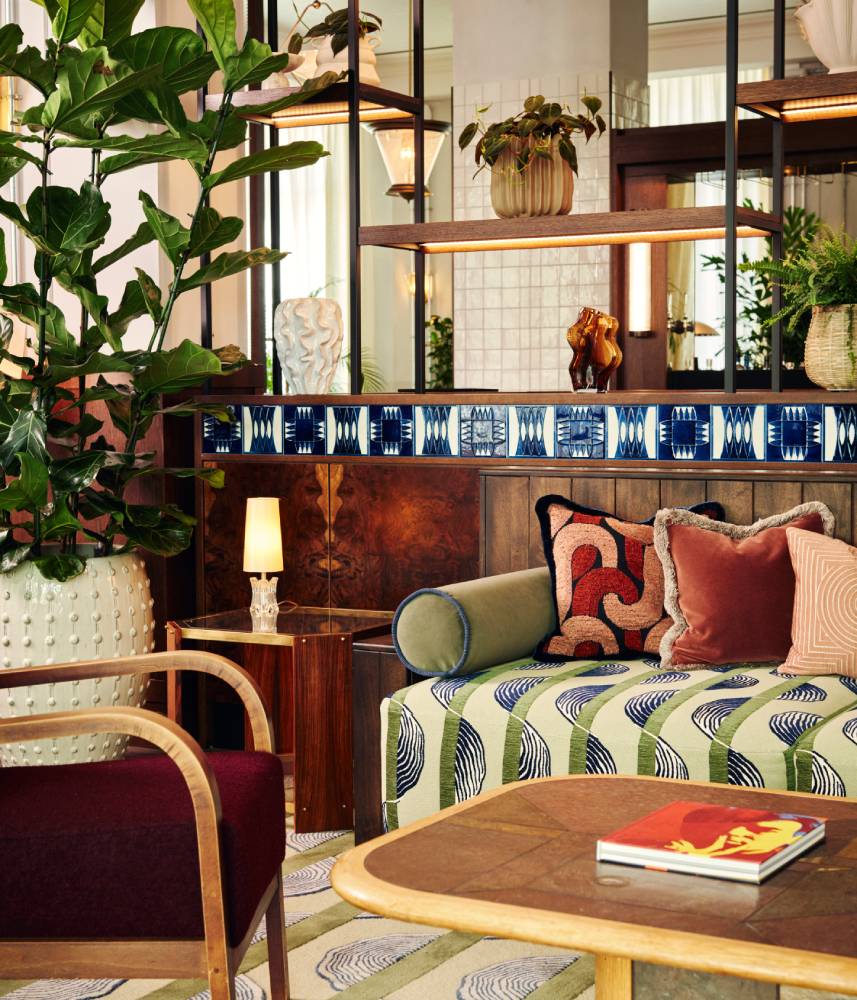Future-facing NI HAO Hotel channels ‘punk wellness’
Tailored to a growing demographic of young, convenience-led travellers, NI HAO Hotel combines bold, cinematic design with traditional Chinese symbols for a unique stay blending old and new.

Photography: Jian Quan Wu
In the heart of the Jinjiang District of Chengdu, China, a boutique hotel has opened its doors to the travellers of tomorrow, promising pocket-friendly prices and convenience as king. Curated by Shanghai-based studio Vermilion Zhou Design Group, NI HAO Hotel – using the welcoming, familiar Mandarin phrase for ‘hello’ – is immediately bold and almost cinematic in style, distinguished by a strong colour palette, graphic wayfinding and elevated, tactile surfaces. The new stay captures China’s unique blend of heritage and modernity by pairing a vibrant, contemporary aesthetic and integrated technology with traditional symbols and shades – creating a pastiche of classic Chinese design that still feels unmistakenly modern.

Reflecting a growing trend across the hospitality sector, the street-level lobby of the NI HAO Hotel features a central island home to an automated self-check-in desk. Clad in the dominant shade of burgundy that features throughout both the shared spaces and the guest rooms, this desk enables guests to check themselves in at their own convenience. As well as allowing busy, jet-lagged travellers to check in at all hours of the night, this increasingly automated process is what many young tourists have come to expect from their accommodation – with smart, integrated technology and contactless service gradually becoming the norm in many new openings.

Suspended above this island is one of the first appearances of the calabash motif, which features heavily throughout the reception, diner and into the guestrooms. According to tradition, this familiar figure of eight shape symbolises blessings, fortune and safety for travellers in Chinese culture, which continuously reappears in the form of bulbous pendant lights, miniature sculptures displayed on shelving units and repeated across surfaces as a simple yet effective pattern (in a retro style somewhat reminiscent of the 1970s). More literal signage is also plentiful throughout the scheme, with suspended, cuboid light fixtures that not only provide warm, ambient glow but also evoke the recognisable shop, bar and restaurant signs in the bustling street markets across the district for easy wayfinding even in the absence of reception staff.

Establishing an intriguing, inviting presence with its subversive lobby design, the ground floor also features broad accordion doors that fold away, opening up the hotel to the buzzing Donghuazheng Street outside. Passers-by can therefore see guests enjoying the in-house diner and breakfast bar or getting work done in one of the cosy seating pods – conveying the very image of the agile, independent modern traveller. Vermilion Zhou describes this economical, traveller-oriented approach as ‘punk wellness’, achieved by incorporating a range of wellbeing-led amenities, meeting areas and workspaces while also keeping staff interaction low. This not only helps NI HAO work to a budget, but also caters to its cosmopolitan target audience who are typically travelling or commuting rather than holidaying long term, prioritising convenience, comfort and style over any overstated opulence.












